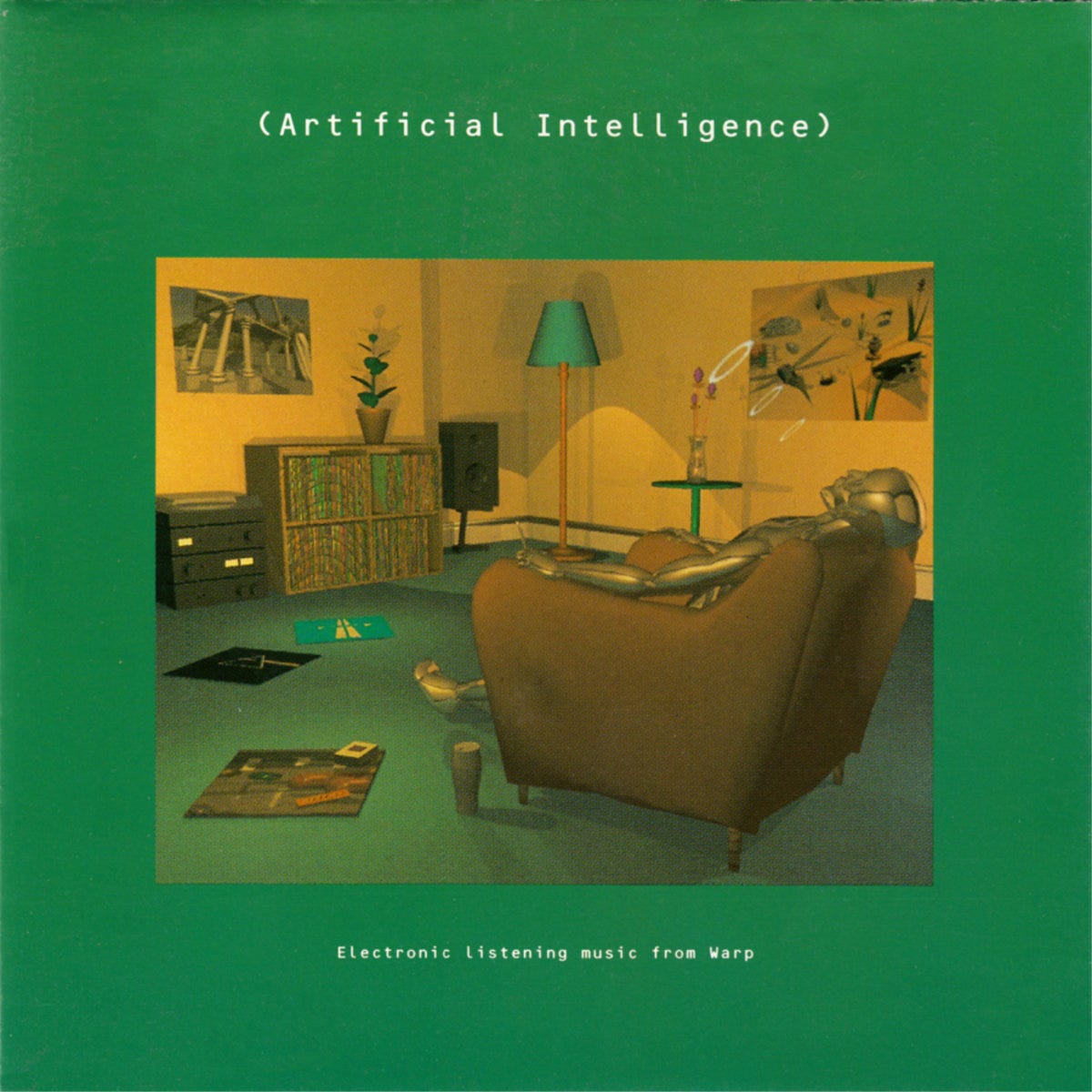Ear Fuel #20: Skydiving Into Forgotten Love
For my final newsletter of 2024, I wanted to stick with the best-of-the-year theme from the previous two weeks - but with a little twist. This week I am going to dig into a few albums that I re-discovered throughout 2024. Relics of the recent and distant past that found their way back into my ears and heart this year.
One of my favorite things about loving music is when a song or record pops back into my brain after it’s hit a point of being somewhat forgotten. Being able to hear something with equal parts nostalgia and newness holds a special sort of musical magic, and it happens a number of times each year.
Similarly, I have a number of albums that upon initial listening I did not like at all. Even some of the so-called “greatest” albums of all-time have been met with a shrug and a ‘meh’ from me upon first experience. Yet days/weeks/months/years later, I find myself with that same album and see why so many loved it in the first place (yes, there are some albums that I try again and still don’t like, but you get the point).
Maybe my brain just needed to be in a different place. Maybe I needed headphones instead of speakers. Maybe maybe maybe maybe. The point is, you don’t have to give up on a record after the first spin. You never know when an album that you passed on at first could become a lifelong favorite later.
First released in the summer of 1992, this one falls firmly in the “I kind of forgot about that record” category, until it popped into my brain during a conversation with friends about the early days of ambient techno and what would become IDM (Intelligent Dance Music). This record was one of the most important when it came to changing the perception of electronic music from something that was only for dance clubs, to a musical space that was as limitless as any other. It pushed the idea that non-dance electronic music didn’t have to be relegated to the minimalist opposite end of the spectrum (read as: Brian Eno’s Ambient series).
This is truly a transitional record, bridging the long-standing club sounds of techno to what we now know as ambient or down-tempo electronic. Many of these tracks would been fine being played in the club scene, but Warp was challenging listeners to sit with the songs in a more relaxed environment, and almost study the artistry at hand.
In many ways, the iconic cover of Artificial Intelligence provides all the context you need - calling it “electronic listening music,” almost instructing that this is not a record for dancing. The robot relaxing (possibly stoned) in a chair, with albums from Pink Floyd and Kraftwerk on the floor, gave a hint of what Warped intended this record to be: A tool for relaxation, perhaps a post-rave come-down.
Many of the musicians featured on this compilation would go on to become household names (within the world of electronic music) like Autechre, Dr. Alex Patterson (co-founder of The Orb), and The Dice Man…whose real name is Richard D James…who most people know a Aphex Twin. If you’re looking for the origin of nearly the entire ambient and down-tempo electronic scene, this compilation is it.
By the way, for you music history nerds, IDM came from a popular, counter-culture email list at the time. Personally, I’d have preferred “electronic listening music,” but such is life…
Listen here: Bandcamp — Spotify
When it comes to an album cover perfectly capturing the mood of the music within, this is one of the most accurate. Joy, freedom, open space and pure sonic happiness run throughout All of Me, and Masayoshi Takanaka remains one of the best kept secrets in music. He deserves to be noted as one of the most talented guitarists of all time, and has an instantly recognizable tone all his own.
Is it smooth jazz? Funk? Disco? Island? City pop? Brazilian? There are so many styles melting together throughout this album that it’s pretty much impossible to accurately categorize. From the indescribable brilliance of the albums’ opener, to the sweeping 80s-tastic sounds of “I Remember You,” to the blissful heights of “Sweet Agnes,” to the tracks called out as sambas and mambos, All of Me knows no musical boundaries. There’s even a Star Wars inspired track on this - NOTHING is off limits to Takanaka’s creativity.
It’s a very special kind of musical trip contained within this album, and I will warn you in advance that it’s ridiculously addictive. It’s a record you’re going to play over and over, and relish playing for your uninitiated friends. All of Me is just one of those records where you’ll find yourself saying, “I don’t know exactly what this is, but I want more of it!”
Bliss for your ears is here: YouTube — Spotify
Some will argue that you won’t find a performance more iconic than Pink Floyd’s 1971 set from Pompeii, and many music fanatics are still waiting for a stand-alone release of this stunning musical moment. Nearly half a century after the film was released (with bootleg recordings circulating the entire time), the band finally released it as part of their 33 CD Early Years box set, but Live At Pompeii has yet to get it’s well-deserved solo release.
Recorded over 4 days inside a rubble-and-moss-laden amphitheater in Pompeii, the performance serves as a peek into a band in transition. The recording took place weeks before the release of their massively under-appreciated album Meddle, and the film premiered just a few months before the release of Dark Side Of The Moon. In many ways, the film captures the final moments before Pink Floyd were vaulted to their now-iconic status.
While the entire set is well worth hearing, I’d argue that the highlight is “Echoes,” and specifically, what they have retitled “Echoes - Part 1.” Rarely will you find a band this in sync with one another, and the song unfolds in glorious perfection - perhaps superior to the version found on Meddle. When the distortion kicks in around the 6 minute mark, it lifts the listener as well - in a way only Pink Floyd can move your mind. (Note: on the CD box set version, they have recombined parts 1 and 2 of “Echoes”)
The remaining four tracks are more than worth experiencing as well, with the band nailing the sinister feel of “Careful With That Axe, Eugene” and the wildly psychedelic sounds of “Set The Controls For The Heart Of The Sun.” If nothing less, Live At Pompeii serves as a solid introduction to early Pink Floyd, which has become largely forgotten in the shadows of their mega-hit-records.
If you find the actual film version of Live At Pompeii, the performance is inter-spliced with “art shots” and clips of the band working on the then-yet-to-be-released Dark Side of The Moon. While it’s definitely cool to see their creative process, these choices were made in an attempt to make Live At Pompeii than “just” a concert performance, and in my opinion, detract from the feel and flow.
That said, Live At Pompeii is an undoubtably cool moment in music history, and if only for the first part of “Echoes,” it’s one that every music fan should experience at least once in their lifetime.
Listen here: YouTube — Spotify (It's Disc 2)
That’s all for this week. As always, share and enjoy.






